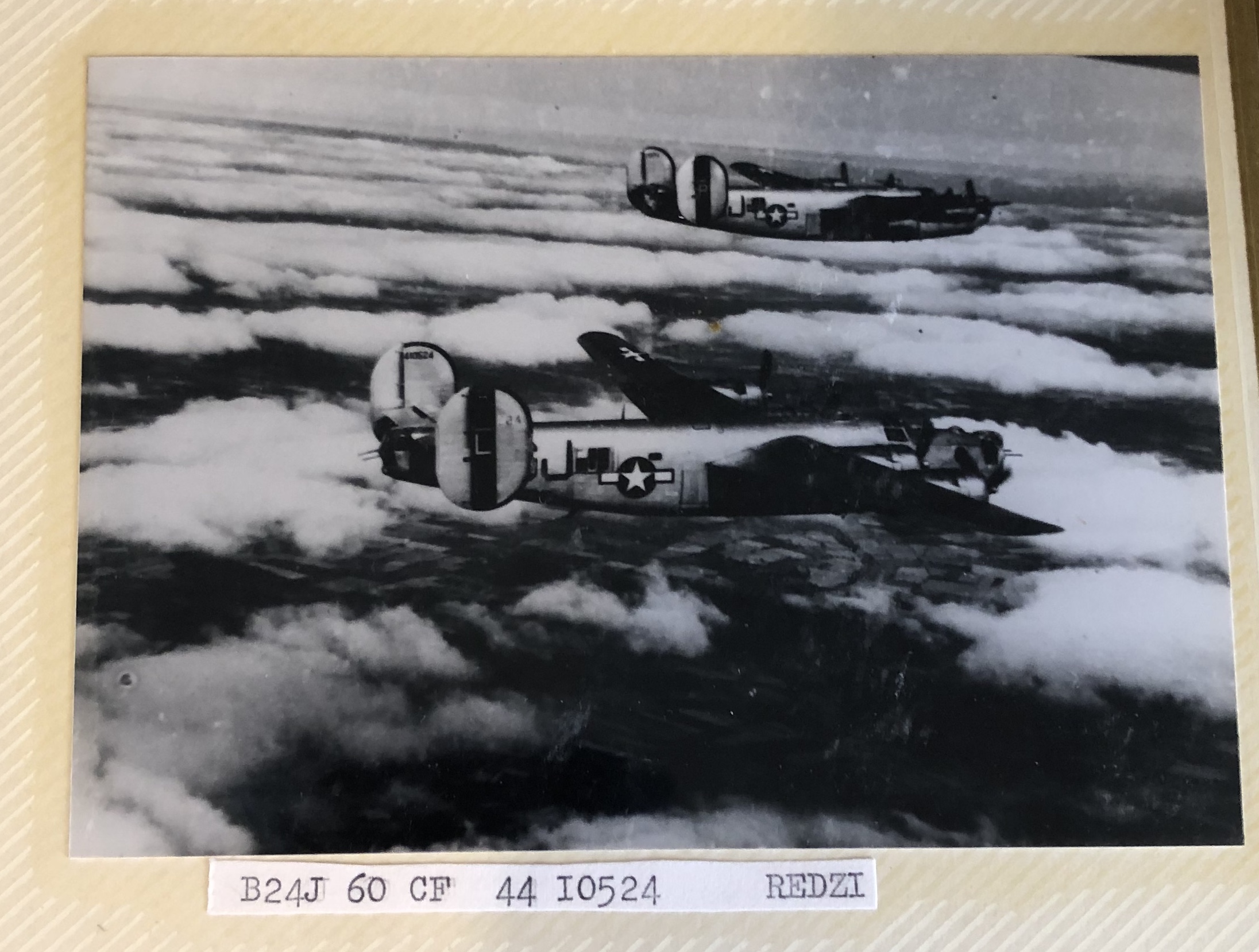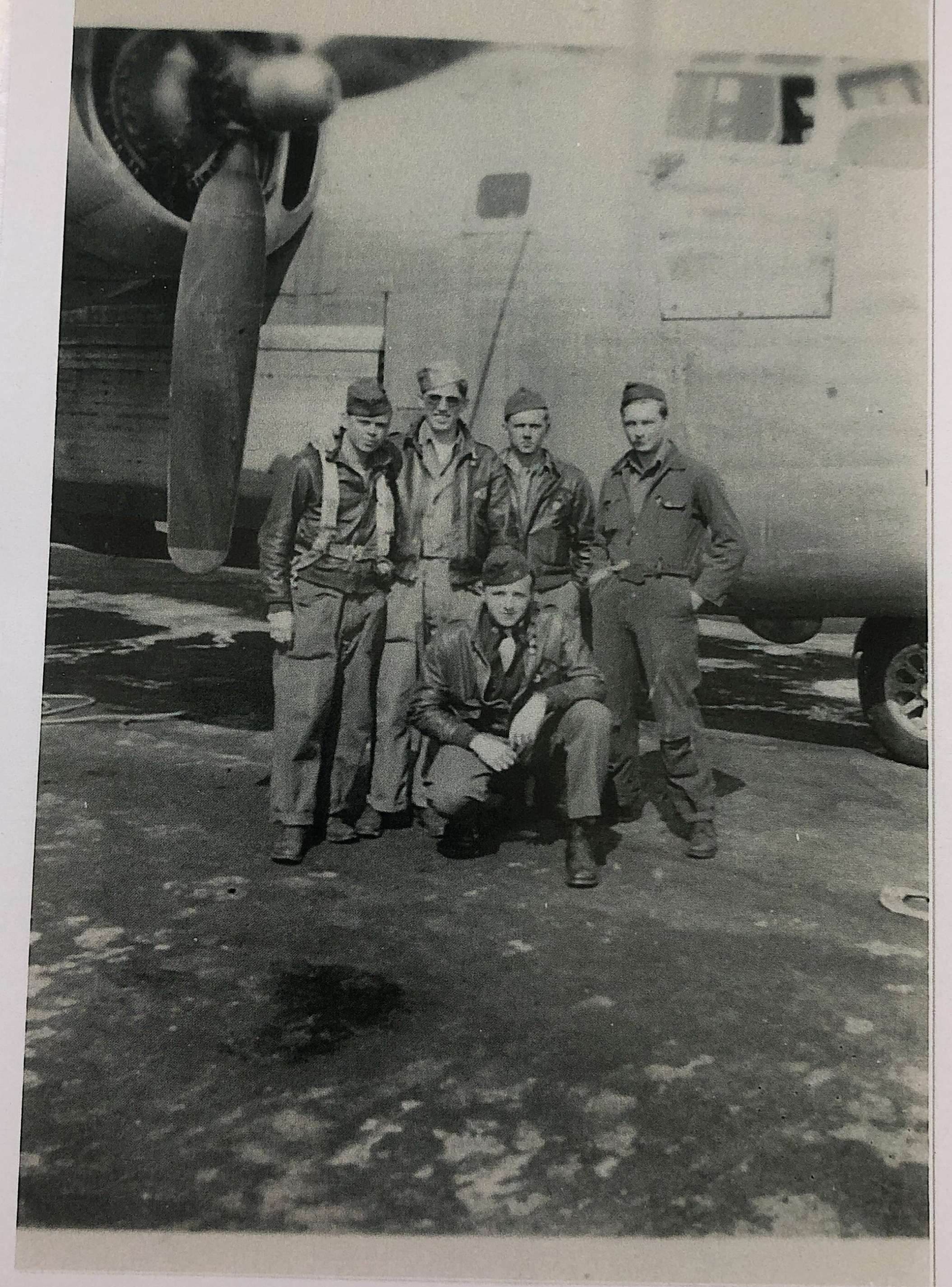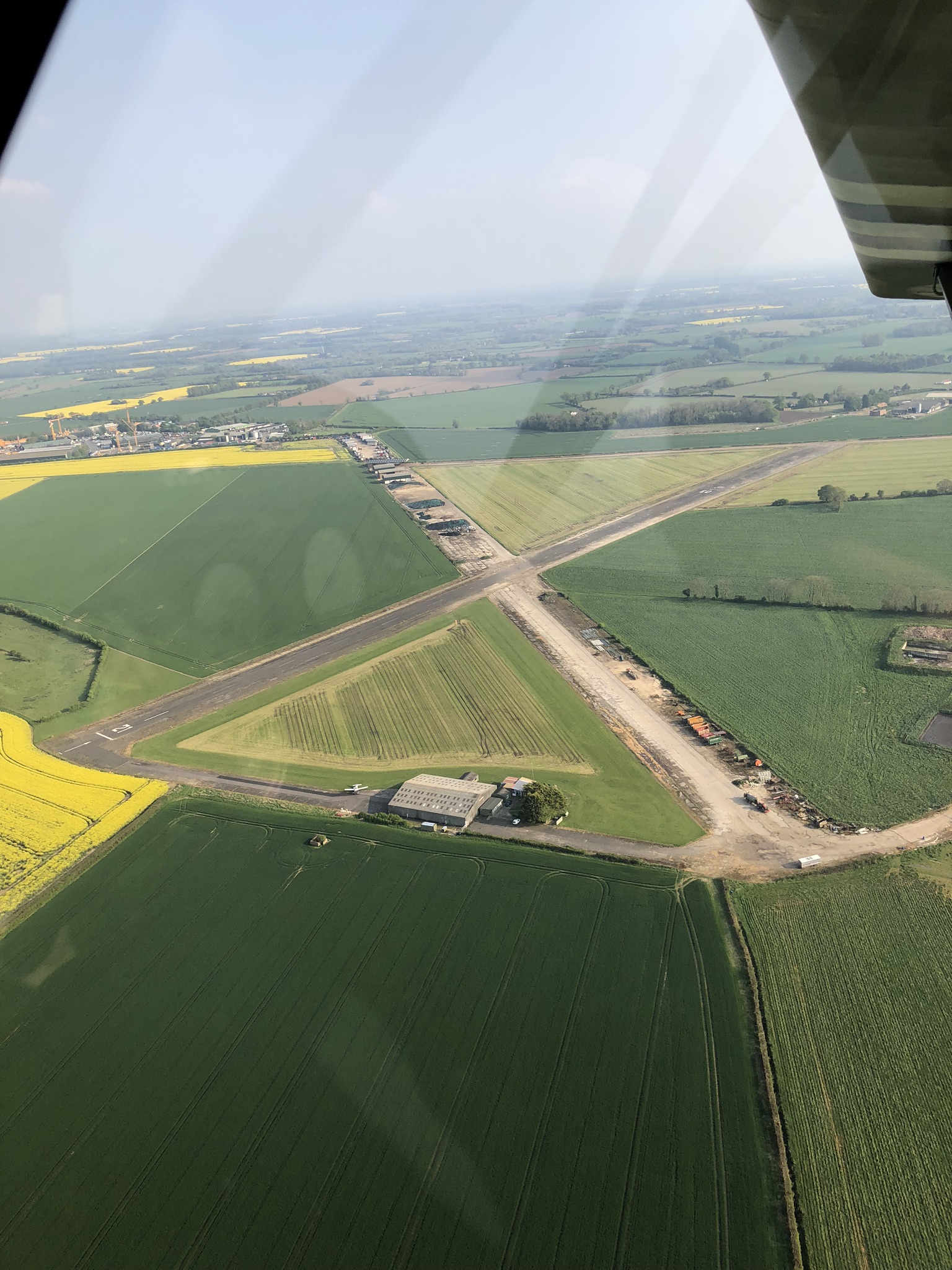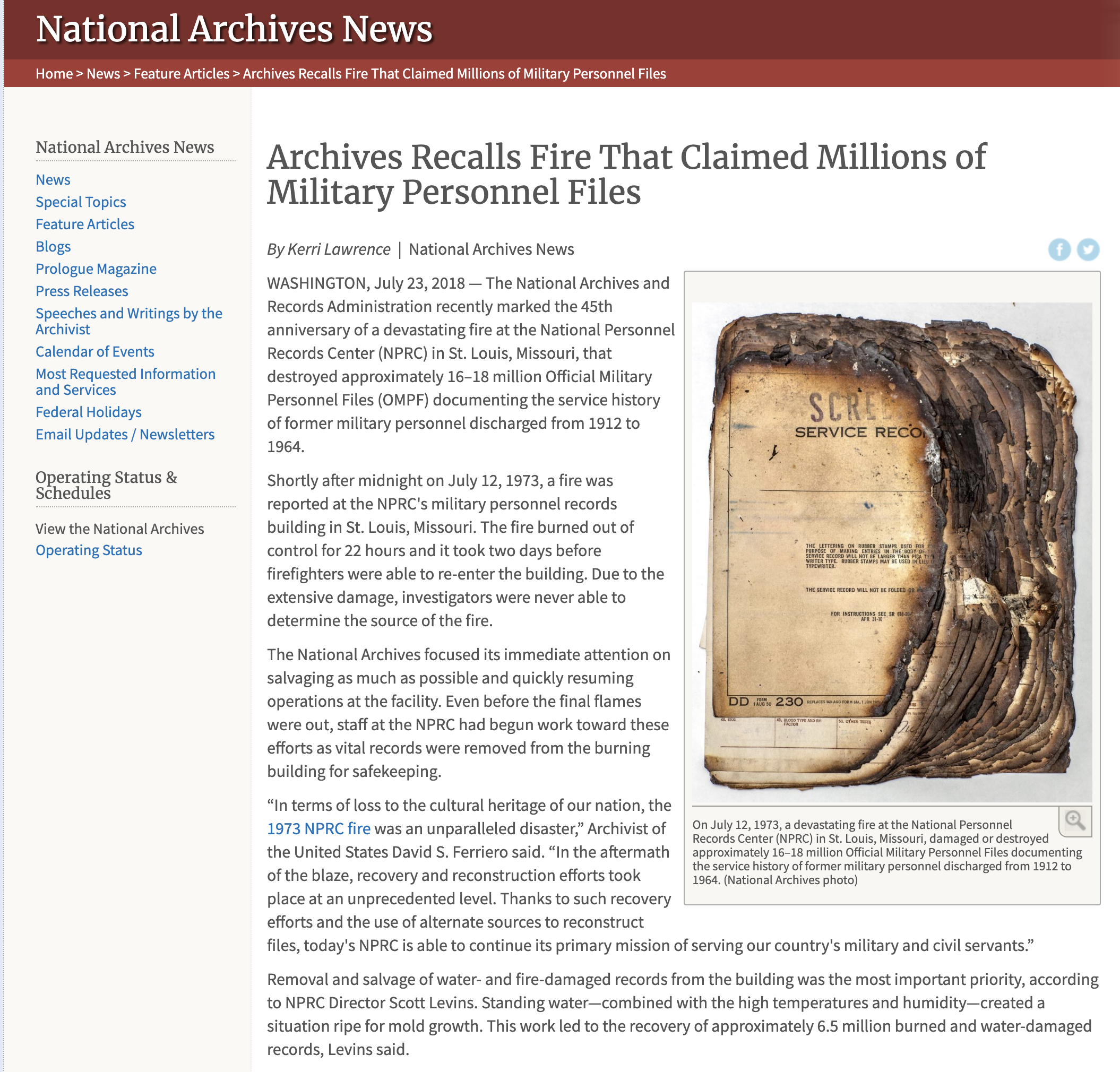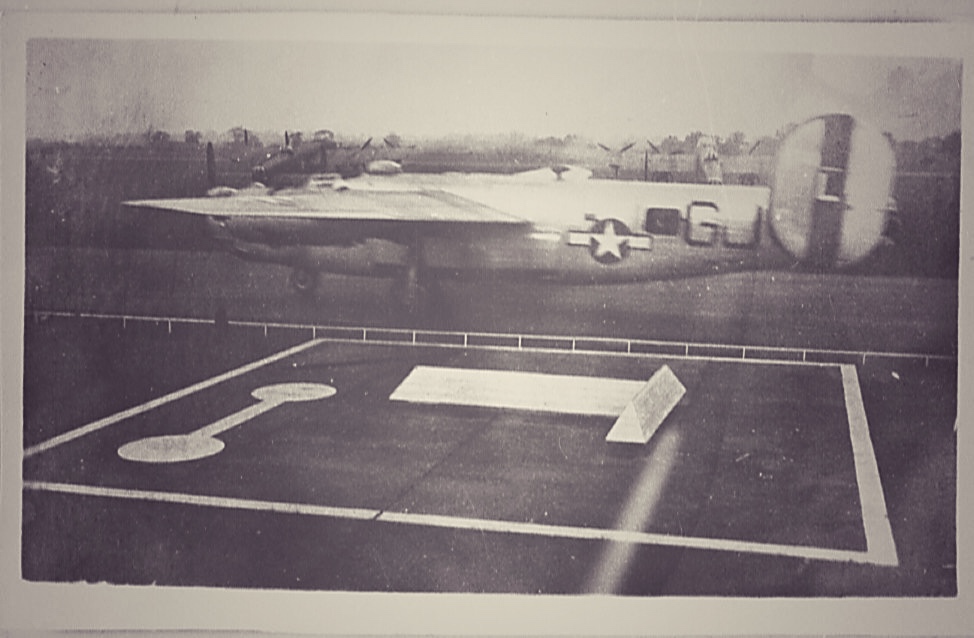The big and small historical details the show nails.
A side-by-side look at images from the war and the series.
(Episode 1 recap available here.)
In episode 2, Cleven flies a mission to Bremen that’s scrubbed when the target area is obscured by cloud cover. Bombs are dropped in the Channel. Men are lost. The mission is for naught. Egan successfully seeks a demotion to get back into combat, joining Cleven as a Squadron Commander. The hellish conditions at high altitude send more of Cleven’s men to the hospital with wounds never seen before in combat. Yes, we see missions in this episode. But we also see life on base. We get a glimpse into HQ, the nerve center of mission operations. We see the bomber boys unwind – with a dance on base and an electric bike race. It’s the moments between missions where the historical details shine in this episode.
Post-Mission interrogation started with scotch and a sandwich.

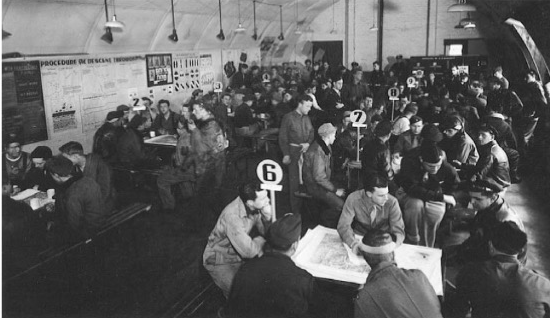
At the opening of Episode 2, we see the 100th Bomb Group crews return to base, herded into 2.5 ton trucks, and driven to interrogation. “Not another word,” officers say over and over, silencing any talk of the mission until debriefing.
During the war, the pre-debriefing ritual was just like what we saw in the show: “[Crews] first went through the medical debriefing to see who might have been hurt or shaken physically or psychologically. This was usually just a quick once over, then a medic handed each crewmen a 3 ounce shot of scotch in a paper cup,” according to Mahoney, a Squadron Commander in an 8th Air Force Group, the same role Cleven and Egan held in the show.
The scotch was given to calm nerves. In the show, Cleven is portrayed as a teetotaler. He would’ve been in the minority of airmen who didn’t drink. “We had a couple of the teetotalers on the crew. This resulted in a bonus for the rest of us,” said one airman at Shipdham Airbase during the war.
Red Cross girls also would’ve offered something to eat, often a donut or sandwich. It’s the latter that we see in this episode.
Then, interrogation began on the HQ site. In a room just like we saw in the show, the men who survived would’ve been seated by crew. The mission was recounted – the conversation led by an interrogation officer seated with each crew, just as we saw at the beginning of this episode. Top priorities were summarizing enemy action (when and where flak or fighters hit), accuracy of the bomb drop, and details about crews shot down. That intel was critical in the creation of a MACR – or Missing Air Crew Report – which tracked everything known about the status of downed crews. Were they confirmed dead (an unsurvivable explosion)? Possibly alive (chutes seen opening)?
J. Good Brown, an 8th AF Chaplain, spoke of the mood at interrogation: “We sit here waiting. The place gets empty after a while. You look for faces and they are not here. They did not come back. The atmosphere in the interrogation room is sad beyond words. I have actually seen the members of the crew crying. I see men’s faces when they walk off alone. I walk over and stand by a man’s side. Perhaps I do not say a word. I just walk out of the building with him.”



There actually was a hospital on base at Thorpe Abbotts.
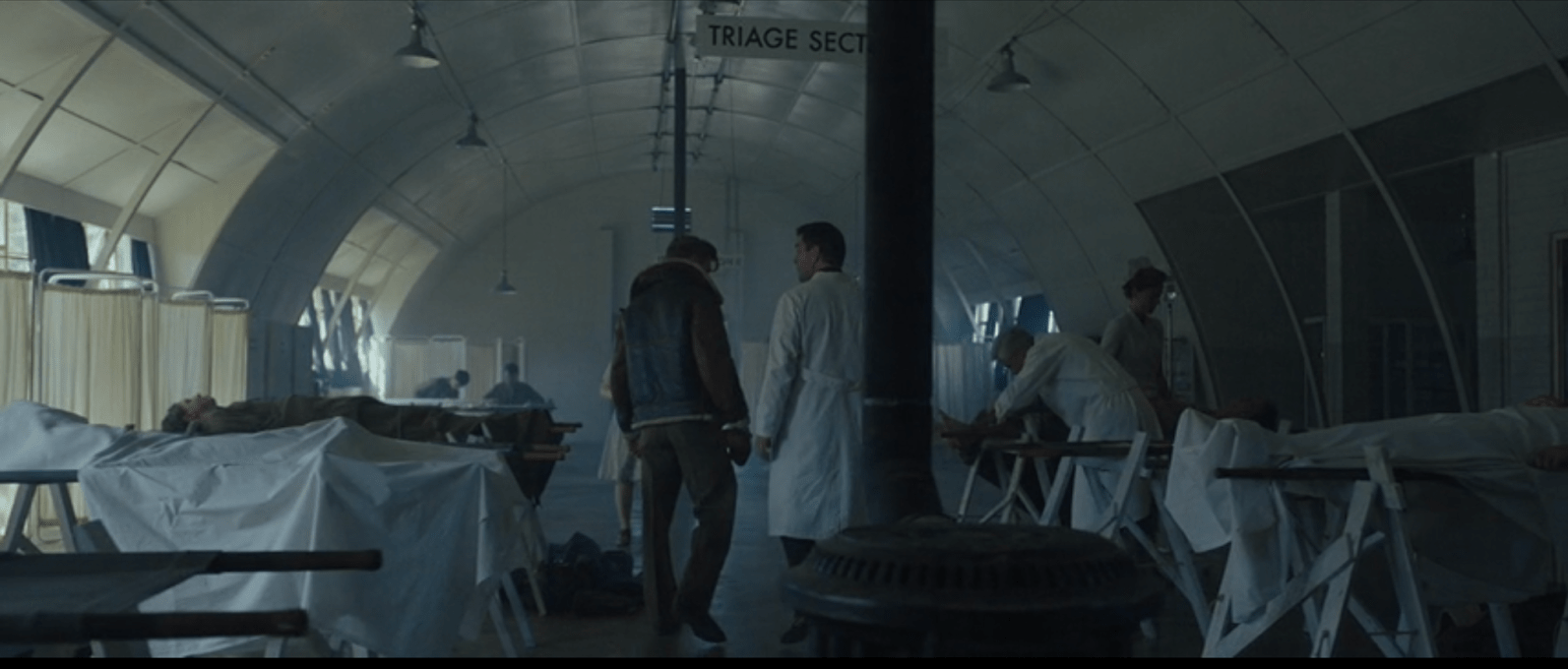

In this episode, we see Cleven visits his men in the hospital. Frostbite seems the predominant wound.
We learn from Cleven’s conversation with the Flight Surgeon that aerial combat medicine was a new and evolving field when the 8th Air Force began flying missions in late 1942. “Flight surgeons had to learn about war and war injuries by experiencing the unique and yet unknown conditions airmen faced in the bombing war,” commented a post-war report on aerial combat medicine.
Each heavy bomber base had its own hospital, with up to 25 beds, where minor injuries could be treated and short-term care provided. For more serious cases – like the frostbite and flak wounds we see in this episode – injured airmen were sent off base to one of five nearby hospitals that specialized in aerial combat medicine. In the first two years of war, frigid temperatures at high altitude caused half of all casualties in the 8th Air Force. Flak and fighters were far from the only foe the 8th AF encountered, particularly for the pioneers of the air war, like Cleven and his men. Conditions at altitude were deadly, too.
By V-E Day, 26,000 8th AF airmen were killed – and 7,000 more wounded. The 8th Air Force lost more men than the Marines lost in every theater of war.

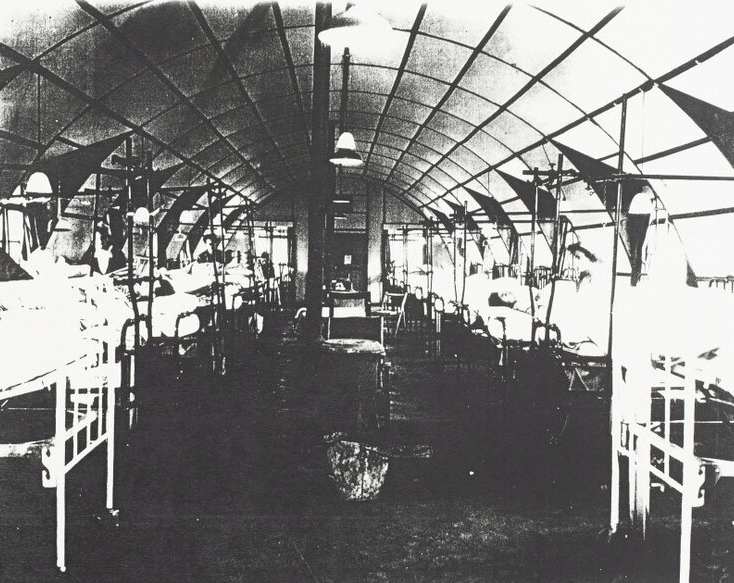

HQ Site – Where Top Brass Worked


At HQ, the Group’s top brass planned missions from beginning to end. It was a place of high intensity, where planning and execution were the focus.

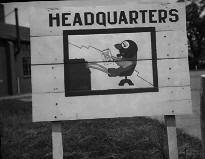

Officers had their own Mess Hall on Base – featuring white tablecloths.

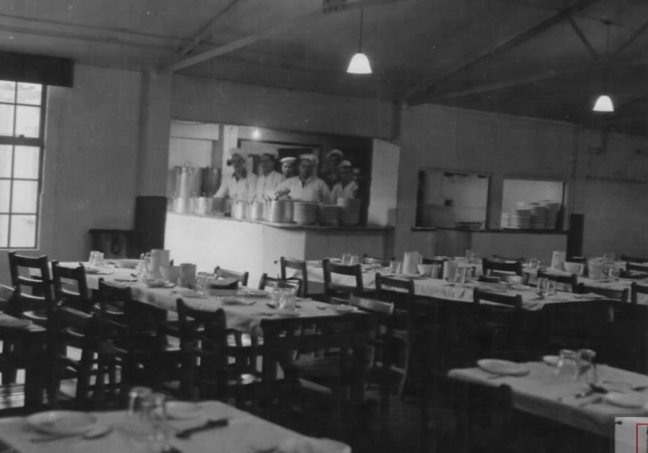
We see Cleven and Egan eating breakfast at the Officer’s Mess Hall in this episode. The set is a carbon copy of images capturing the real thing during the war.
On 8th AF bases during the war, mess halls were split – one for Officers and one for Enlisted men.
White table cloths, wooden chairs, and cloth napkins were staples in the Officer’s Mess Hall. It was austere, but elevated, just like we see in the show.
With a reported budget of over $250 million, the production’s attention to detail isn’t surprising. Series writer John Orloff says some sets, like the Station Theater and the Mess Hall, were built for just a handful of scenes. Props like cups and plates were authentic to the time period.
While the mess hall scene wasn’t one most would call noteworthy, it’s yet another example of no detail overlooked in the series.

Dances were frequent affairs on base – and women were brought in from surrounding English villages.
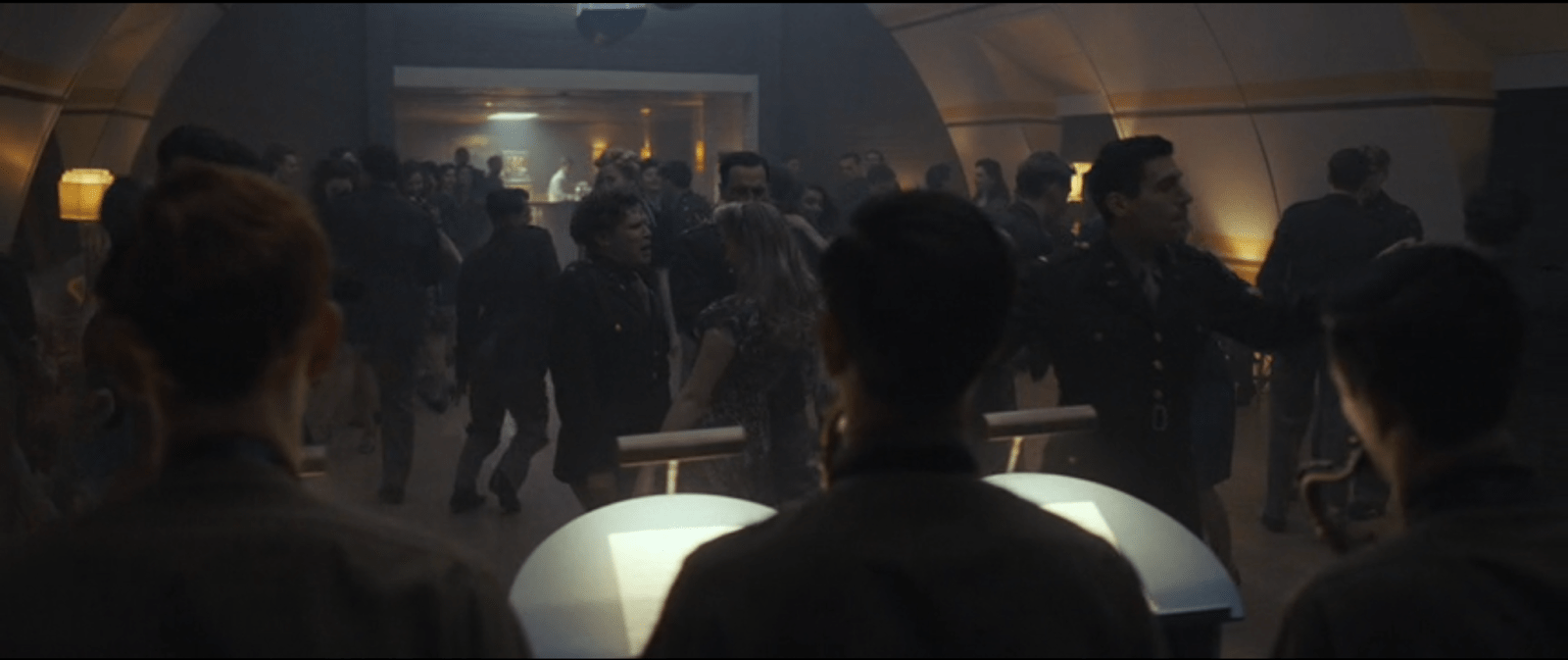

(Right) Officer’s dance at Shipdham.
We see Cleven and Egan at an Officer’s dance at Thorpe Abbotts in this episode. Such occasions were a staple on 8th Air Force bases.
The American Red Cross club on base typically organized these evening events, separated by officers and enlisted men.
In the series, the men tap their toes to live music, thanks to the station band who plays on stage. A band on base was not unique to Thorpe Abbotts. Most 8th AF bases cobbled together a band from ground crews and airmen who moonlit as musicians.
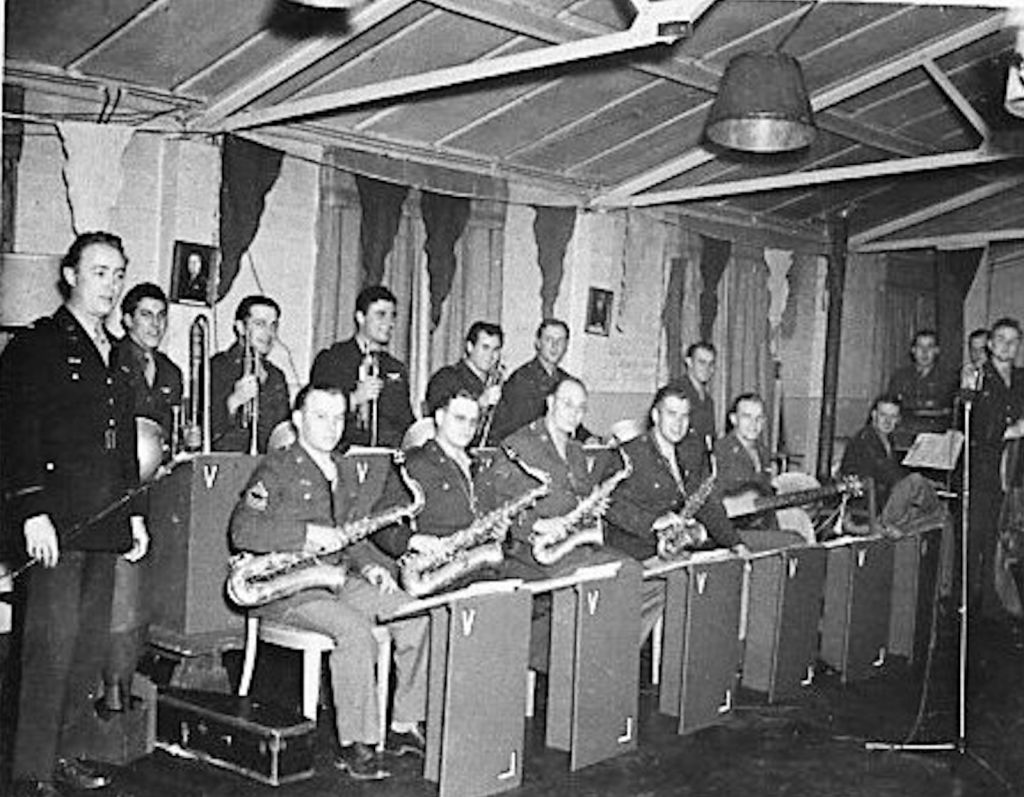

Bomber boys did anything for a bike – then did anything on a bike.


In episode one, Egan’s antics at a local pub score him two bikes.
At this episode’s close, we’re treated to a bike race through the Communal Site buildings, led by Egan and Cleven.
Bikes are here, there, and everywhere in the show. And that’s historically spot on. With the sprawling size of 8th AF bases, coupled with the British rationing of gasoline, bikes were a necessity in the English countryside for Americans and English alike.
For American bomber boys, a bike came with a steep price tag. But it was a necessity.
In this episode, the boys of the Bloody 100th invent a new way to pass the time on base. A bike race. It’s an electric scene, a rare moment of joy in a war plagued by loss. It’s fun that screams of youth, reminding us just how young these boys fighting the war were.
At a nearby 8th AF base during the war, bomber boys held a similarly electric bike race outdoors. Thick, dense, hedgerows lined many of the narrow East Anglian roads. The bomber boys invented a rather violent game where an airman started on a bike, on either side of the hedgerow. Bets were placed on who would reach the end first and knock their opponent off his bike. Ribs were broken. Bikes were ridden backwards. But fun was had.



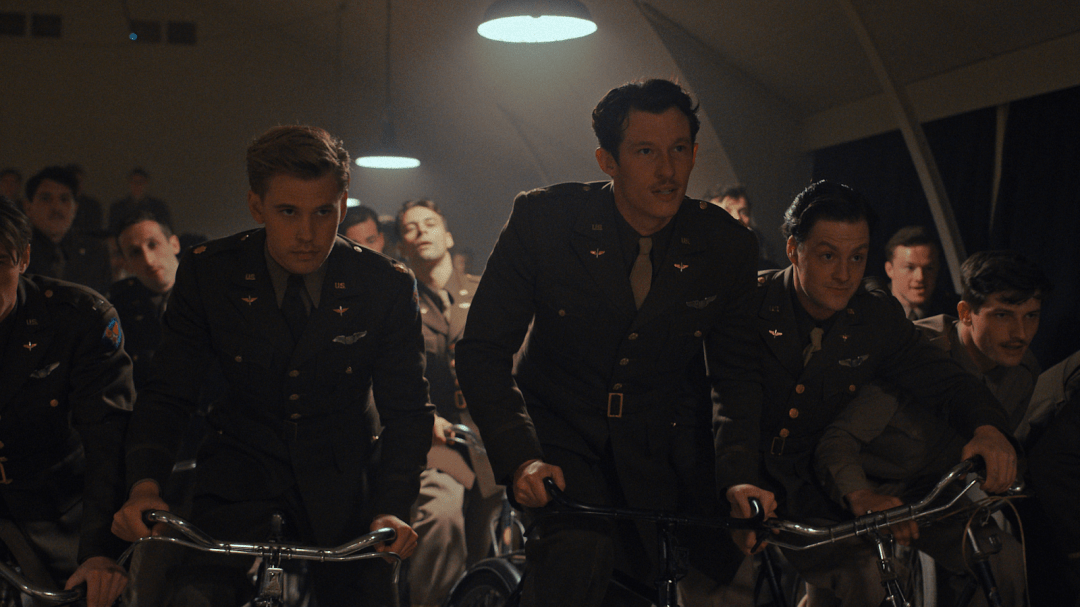




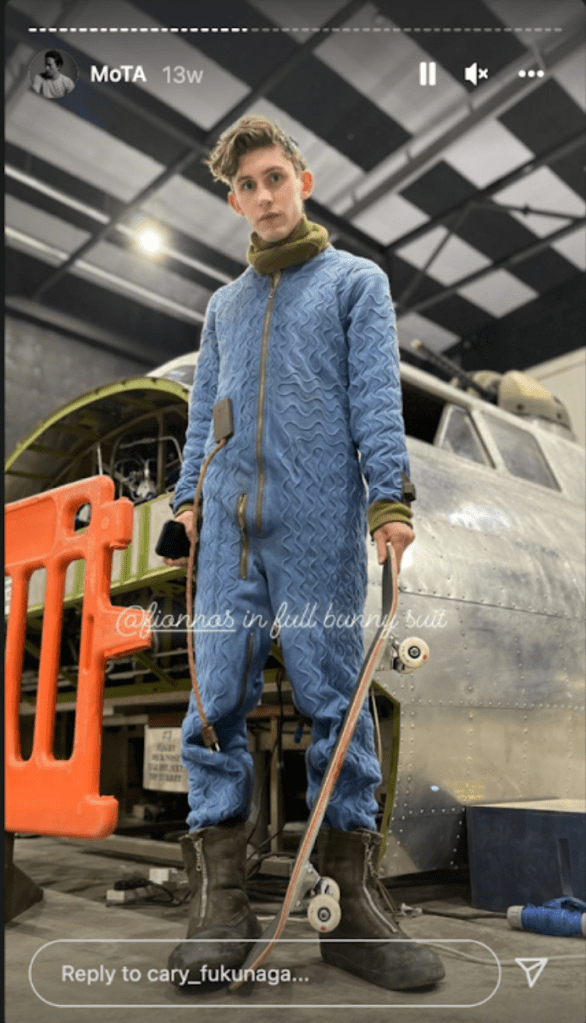
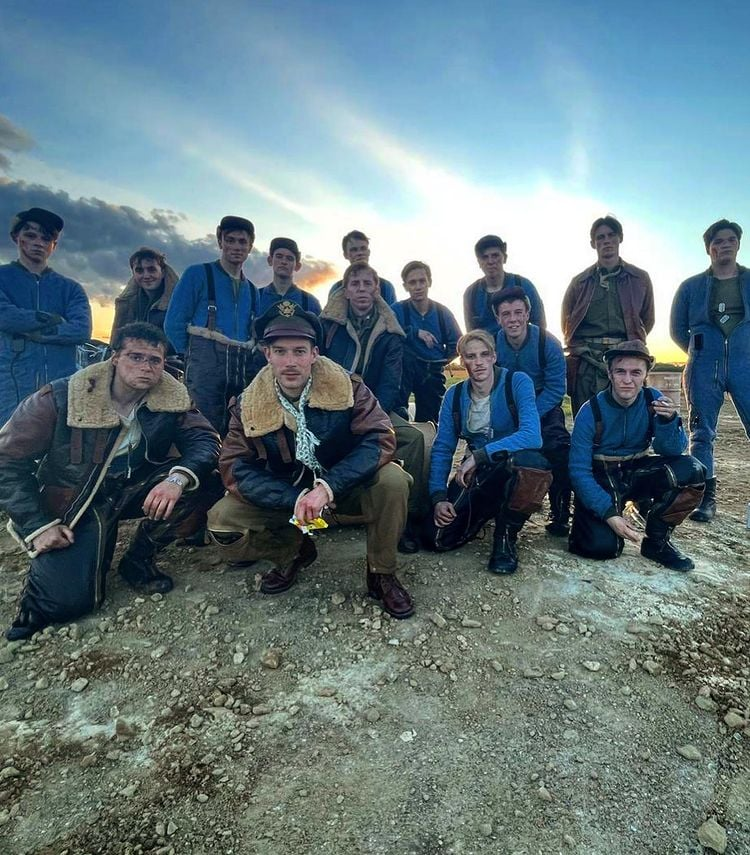
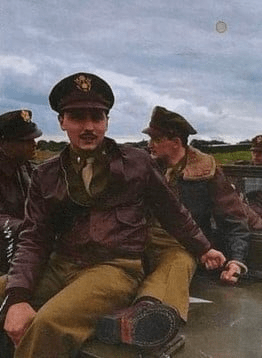
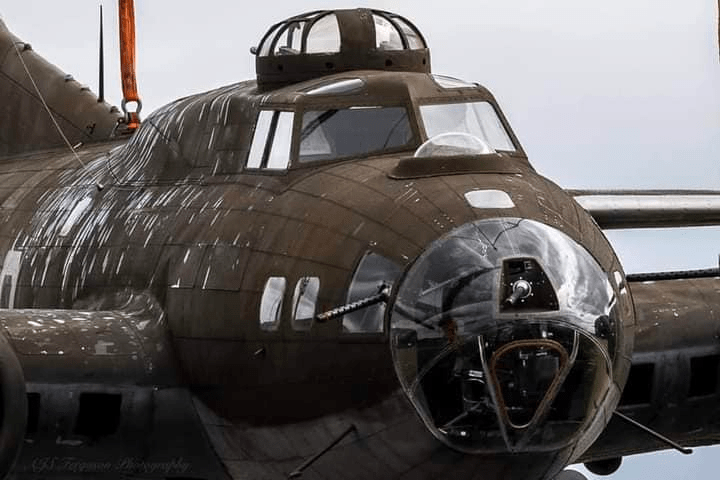
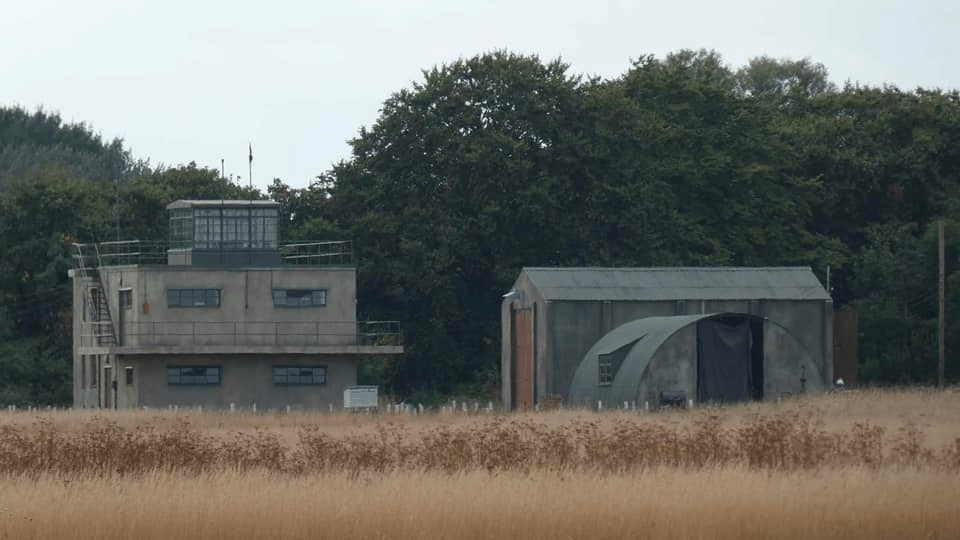
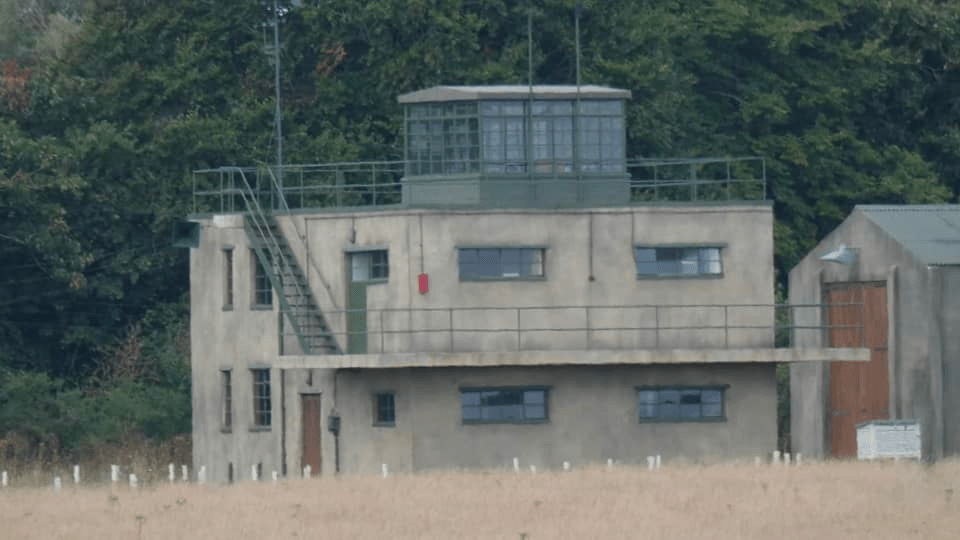


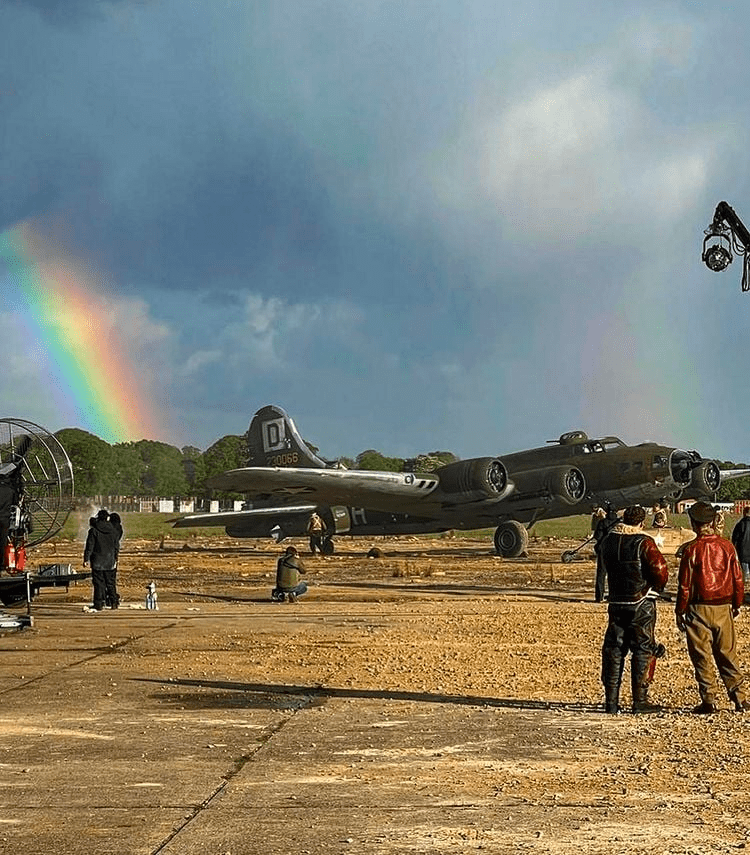


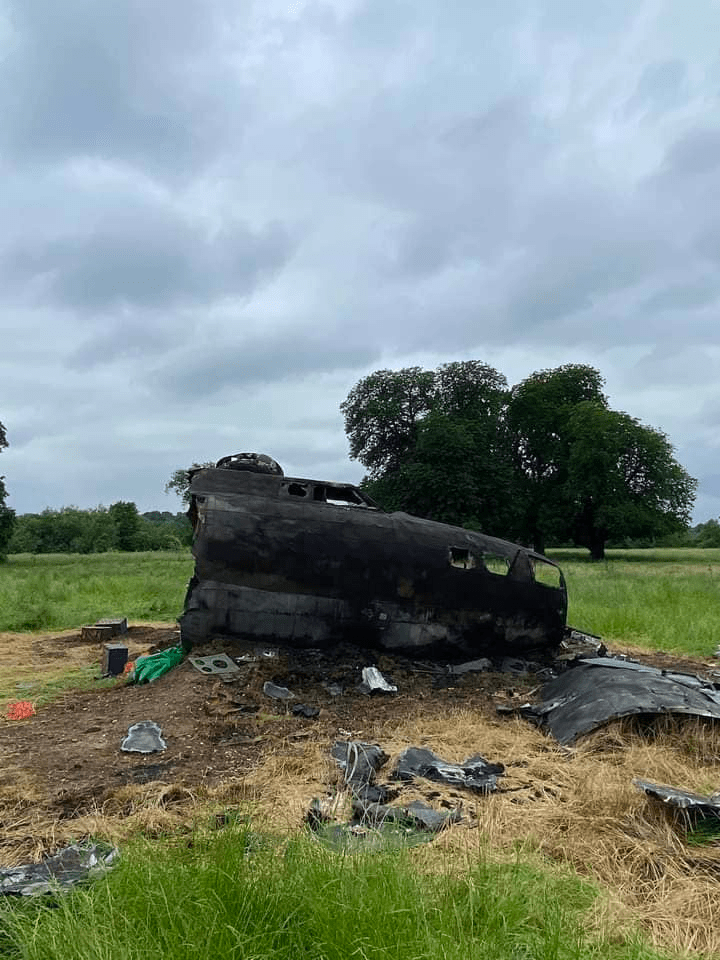
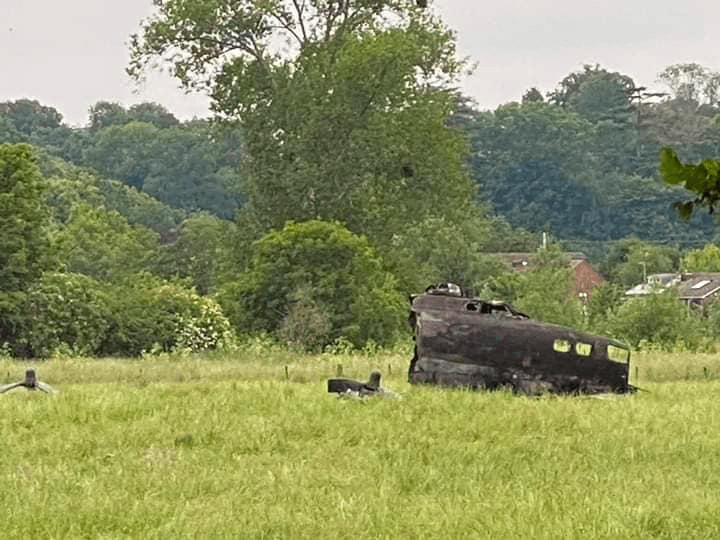





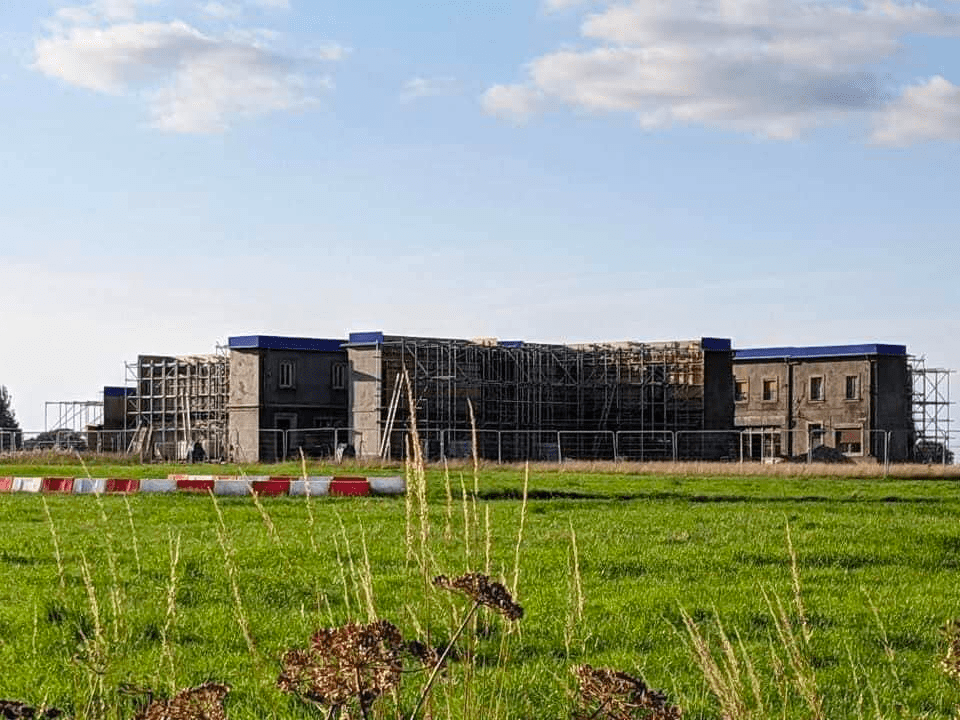
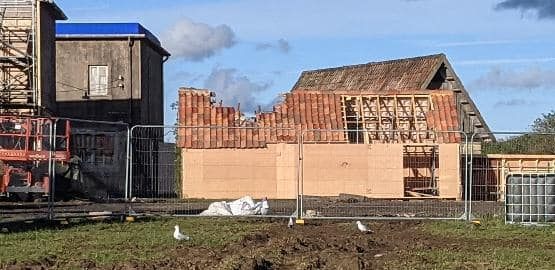
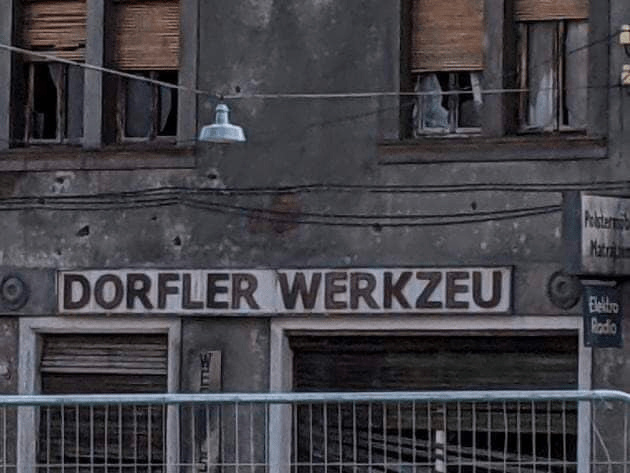
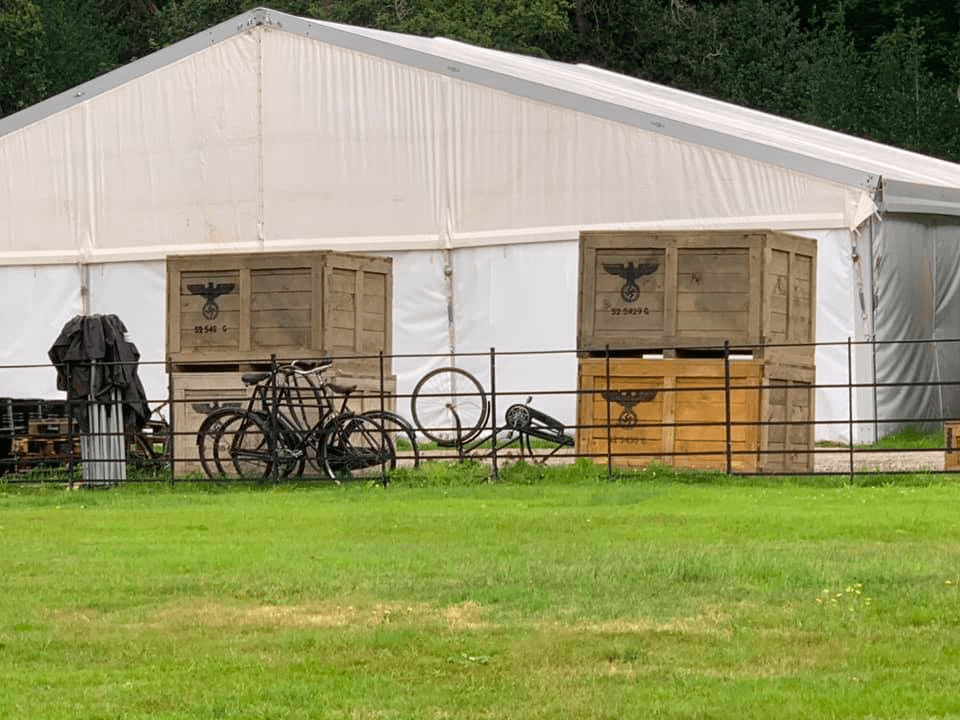
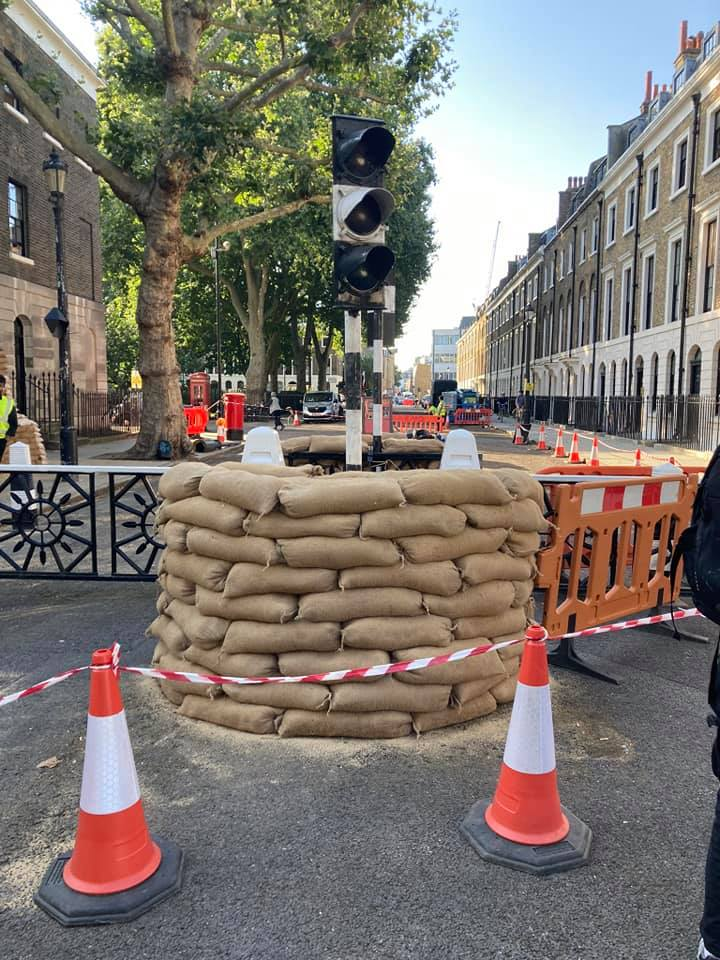
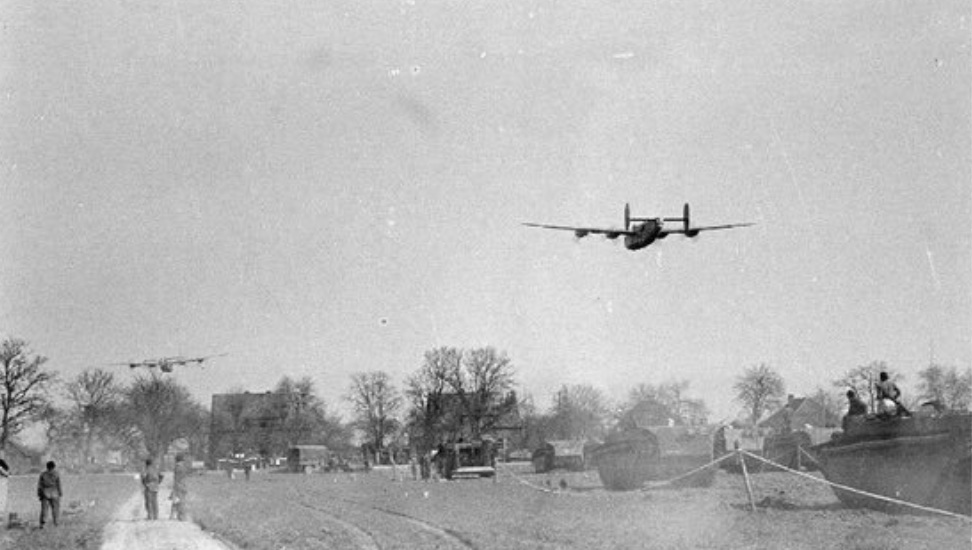
 The radio program explores the story behind
The radio program explores the story behind 

 Getting to the Shipdham Flying Clubhouse requires driving down the one remaining wartime runway. This half-mile stretch of reinforced concrete was the literal launching point for the monumentally difficult task of strategic daylight bombing. As the rain slapped against Mike’s car and the potholes formed from this harsh climate jostled our bodies, I looked out the window lost in the scenes that unfolded here 75 years before.
Getting to the Shipdham Flying Clubhouse requires driving down the one remaining wartime runway. This half-mile stretch of reinforced concrete was the literal launching point for the monumentally difficult task of strategic daylight bombing. As the rain slapped against Mike’s car and the potholes formed from this harsh climate jostled our bodies, I looked out the window lost in the scenes that unfolded here 75 years before. 




